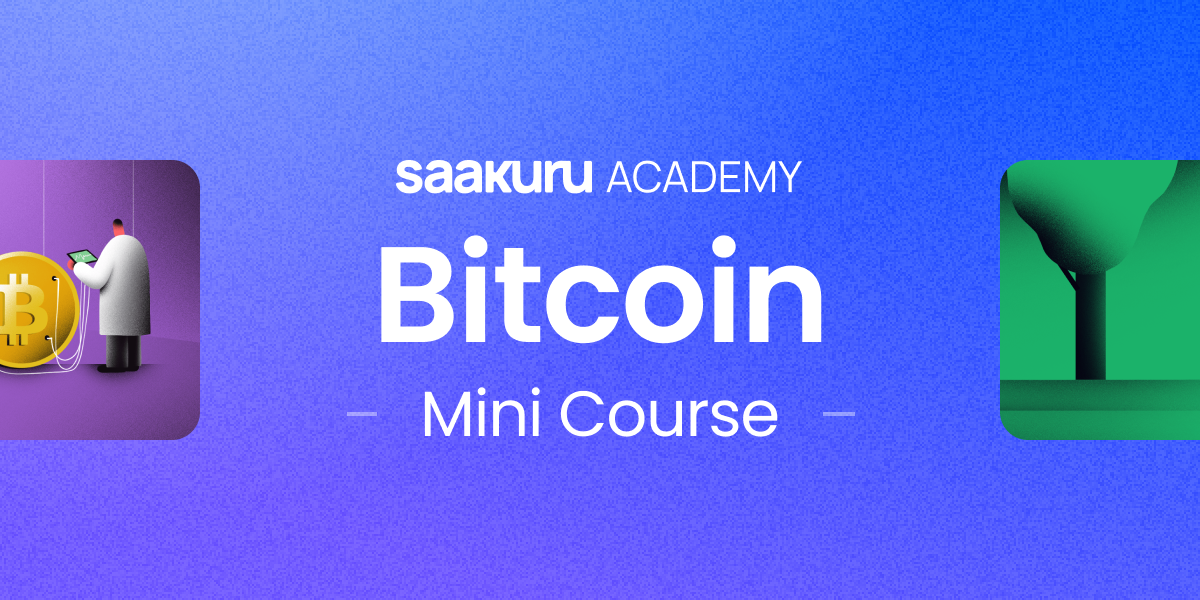
What is the Bitcoin Lightning Network and how does it work?
Have you ever become frustrated by how long it takes to process a Bitcoin transaction, or by how much it costs? The solution might be the Bitcoin Lightning Network, a “Layer 2” technology built on top of the Bitcoin blockchain that has the ability to process 1 million transactions per second — compared to just seven — at a fraction of the cost.
The Lightning Network has steadily grown in popularity since it was first devised in 2015, and now has some high-profile supporters, including Twitter and the government of El Salvador. In this AAG Academy guide, we’ll explain what the Lightning Network is, why it has become so important, and the problems it solves in today’s cryptocurrency world.
What is the Bitcoin Lightning Network?
The Bitcoin Lightning Network is a “Layer 2” blockchain that allows Bitcoin transactions to be carried out faster and more affordably. It does this by taking those transactions off the main Bitcoin network, which is susceptible to congestion — slowing down processing times and making transactions more expensive — having significantly grown in popularity over the years.
The Lightning Network was first proposed by Joseph Poon and Thaddeus Dryja in a paper published in 2015, and it has been in development since then. Poon and Dryja recognized one of the biggest problems Bitcoin faces after experiencing exponential user growth, which is that transaction times can become incredibly lengthy when the main blockchain is busy.
The Lightning Network aims to solve this problem by handling a share of transactions and reducing the work that needs to be carried out by the original Bitcoin blockchain. Many apps take advantage of this, including Twitter, which allows users to be “tipped” in Bitcoin via the Lightning Network, and Chivo, a wallet created by the government of El Salvador.
Anyone can use the Lightning Network by simply setting up a compatible wallet app, such as Blue Wallet or Strike for those who prefer a custodial option, and Breez or Zap for those who prefer a non-custodial option. The excellent MetaOne wallet from AAG will also add Bitcoin Lightning Network support in early 2023.
How does the Bitcoin Lightning Network work?
If you understand how a blockchain works — we have an in-depth guide on this if you’re not sure — the concept of a Layer 2 is quite simple. Imagining the main blockchain, the Layer 1, as one lane on a highway, a Layer 2 can be thought of as a second lane that runs alongside it. The Layer 1 lane handles most things, but you can switch into the Layer 2 lane when you need to.
When you use the Lightning Network, you’re not switching highways, so you’re not leaving the Bitcoin blockchain altogether; you’re simply using another lane on it. This not only allows you to avoid some of the traffic in the main lane, but you’re also helping to alleviate some of the congestion on it for others, allowing the highway as a whole to operate more smoothly.
When a transaction is carried out using the Lightning Network, a direct channel is established between two parties. Once that channel is created, it allows funds to be transferred almost immediately, and it remains open for as long as necessary. It is not until the channel is closed that the transactions are fed back to the main blockchain so that final balances can be settled.
It is the opening and closing of channels that requires most of the work — and the effort of the Layer 1 chain — but while a channel is open, transactions are handled by the Layer 2 chain and everything can move more quickly. What’s more, it is possible for multiple channels to be crossed, a little like a spider’s web, for greater communication between multiple parties.
For instance, if User A opens up a direct channel with User B, who also has a direct channel with User C, it’s possible for User A to freely send User C funds while all channels remain open without having to establish a whole new channel. If User C then opens a channel with User D, User D could send funds to User A. You can see how efficient the network becomes as it grows.
It’s also worth noting that because Layer 2 transactions take place off the original blockchain, they are more private since they do not appear on the Layer 1 ledger.
Why was the Bitcoin Lightning Network built?
Bitcoin, which first launched in 2009, simply wasn’t designed to handle the number of users it sees today, so during busy periods, the network is significantly strained. Using the highway analogy we outlined above, imagine trying to use exactly the same road everyone else in the city is using and there’s just one lane for everyone. It would very quickly grind to a halt.
The main problem is that Bitcoin, like most other decentralized cryptocurrencies, relies on a peer-to-peer network of computers, each of which has to come together to agree on and keep a record of every transaction that takes place using the proof-of-work (PoW) consensus mechanism. This is a time-consuming and energy-intensive process.
As the number of users increased, that network simply couldn’t keep up with demand from Bitcoin users, so processing transactions became slower and more costly. This is because network contributors would prioritize users willing to pay higher fees, thereby forcing others to increase their fees as well. The Lightning Network was primarily built to solve this problem.
Pros of the Bitcoin Lightning Network
We’ve touched upon a lot of the pros of the Bitcoin Lightning Network throughout this guide. Here’s a summary:
- Greatly alleviates strain on the Layer 1 (main) Bitcoin network
- Allows for significantly faster, more affordable transactions
- Reduces the amount of energy required to process transactions
On their own, these are welcome additions to any blockchain, and when they’re combined like they are with the Lightning Network, they make for a crucial and much-needed upgrade to Bitcoin that simply wouldn’t function as well today if the Lightning Network didn’t exist.
Cons of the Bitcoin Lightning Network
It is important to bear in mind, however, that the Lightning Network has its cons as well. Not only do you need a wallet app that’s compatible with the Lightning Network, you may need to fund it from a traditional Bitcoin wallet, which usually means having at least two different wallet apps. Users must also set up channels before they can carry out transactions, which require a fee.
The Lightning Network’s biggest cons are those that can cause asset loss. As things stand, bugs that are present in its code can cause payments to become stuck, which means they do not get verified. It is possible to get a refund for these payments, but this can take days to acquire since processing valid transactions is a higher priority than issuing refunds.
We must also take offline transaction scams into account. Because Lightning Network is designed to handle transactions off the Layer 1 chain to reduce its strain, it is possible for one participant in a payment channel to close the channel while another participant is offline and steal the funds tied up in the channel. By the time this is realized, it is impossible to remedy.
To avoid a situation like this, users are advised to transact only with those they can trust.
References
- What is lightning
- Lightning network
What is the lightning network in bitcoin and how does it work - Lightning Network
Frequently Asked Questions
The Lightning Network is a Layer 2 technology built upon the main Bitcoin blockchain, so yes, it is based on blockchain technology.
No, the Lightning Network can also be used by other cryptocurrencies, so long as the creators of those currencies integrate it into their projects.
The concept of the Lightning Network was first published in 2015, but it wasn’t until 2017 that its first transaction took place.
The Lightning Network is capable of processing up to 1 million transactions per second, making it the most efficient payment mechanism on the planet. In comparison, Visa, the biggest payment processor in the world, can process up to 65,000 transactions per second, while the main Bitcoin blockchain can process only seven transactions per second.
Disclaimer
This article is intended to provide generalized information designed to educate a broad segment of the public; it does not give personalized investment, legal, or other business and professional advice. Before taking any action, you should always consult with your own financial, legal, tax, investment, or other professional for advice on matters that affect you and/or your business.
Get news first
Be the first to get our newsletter full of company, product updates as well as market news.

















